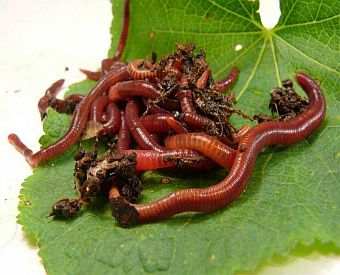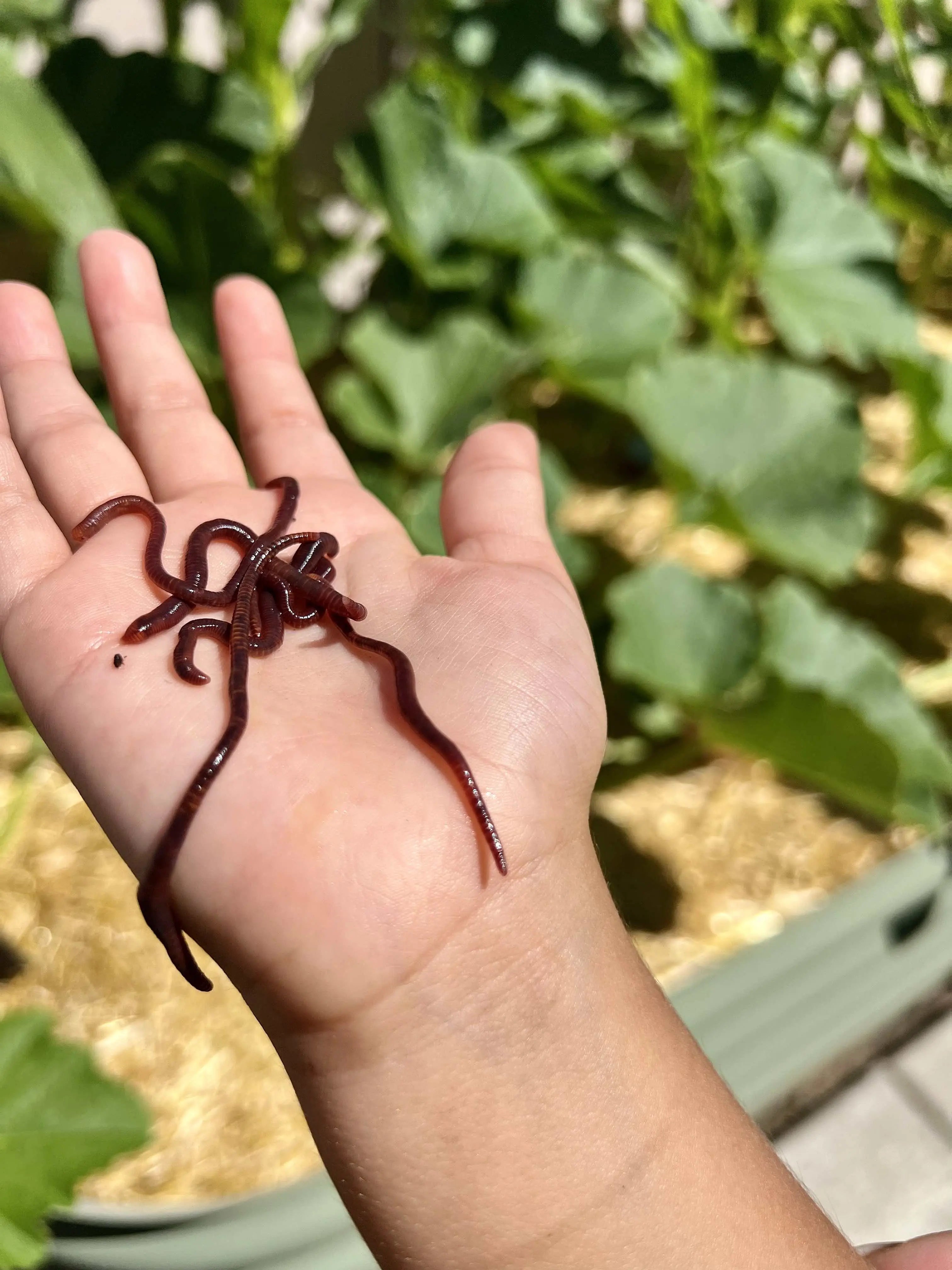Get Red Wiggler Worms Online - Convenient and Fast Shipping
Get Red Wiggler Worms Online - Convenient and Fast Shipping
Blog Article
Taking Full Advantage Of the Advantages of Red Wiggler Worms: A Comprehensive Handbook for Home Gardeners and Urban Farmers
In the realm of lasting horticulture techniques, red wiggler worms stand as unsung heroes, silently changing natural waste into nutrient-rich spreadings that can work marvels for dirt health. By checking out the details of just how to successfully care for and optimize the advantages of red wiggler worms, people can open a riches of possibilities for boosting the sustainability and productivity of their horticulture ventures.
Recognizing Red Wiggler Worms
Red Wiggler worms, renowned for their effective composting capabilities, are a types of earthworms widely made use of in vermiculture methods. These worms, clinically referred to as Eisenia fetida, flourish in decomposing organic material, making them ideal candidates for composting (Red Wiggler Worms). Red Wigglers are ravenous eaters, efficient in consuming their own weight in organic waste daily. Their digestive system procedure breaks down raw material into nutrient-rich spreadings, which are a valuable resource for enriching dirt and advertising plant development.
One key attribute of Red Wiggler worms is their reproductive price. These hermaphroditic creatures possess both female and male reproductive body organs, enabling them to replicate swiftly under favorable problems. A mature Red Wiggler can create multiple spawn in a brief period, guaranteeing a steady populace within a composting system.

Establishing a Worm Bin
When developing a worm container for vermiculture functions, proper prep work and focus to information are essential for developing a conducive environment for Red Wiggler worms. Begin by picking a suitable container for your worm bin.

Location the worm bin in a cool, dark location away from direct sunlight and extreme temperature levels. On a regular basis keep an eye on the wetness levels, including water if the bed linen really feels flaky or dry. Feed the worms a balanced diet of vegetables and fruit scraps, preventing citrus fruits, onions, and spicy foods. By complying with these steps, you can establish a prospering worm container that will efficiently process natural waste right into nutrient-rich vermicompost for your yard.
Feeding and Preserving Worms
Making sure a nutritious and well balanced diet is critical for the health and productivity of Red Wiggler worms in a vermiculture system. Red Wigglers are starved eaters, with the ability of consuming their very own body weight in natural issue daily. To maintain a flourishing worm population, it is important to give them with a range of food scraps such as fruit and vegetable peels, coffee grounds, tea bags, and crushed eggshells. It is vital to avoid feeding them citrus fruits, onions, garlic, dairy items, meat, and oily foods as these can be dangerous to the worms or cause undesirable smells in the container.
Correct wetness degrees are likewise important for the health of Red Wiggler worms. By diligently monitoring their diet regimen, moisture, and environmental problems, home gardeners and metropolitan farmers can maintain a healthy and balanced and productive Red Wiggler worm populace for composting functions.
Collecting Worm Spreadings
To effectively draw out nutrient-rich worm spreadings from the vermicompost, an organized harvesting procedure is vital for optimizing the composting advantages. Red Wiggler Worms. The very first action in harvesting worm spreadings is to motivate the worms to move away of the container. This can be achieved by putting fresh food scraps on one side and leaving the opposite side uninterrupted for a few days. When the bulk of worms have relocated to the side with fresh food, the spreadings can be collected from the opposite side.
After the spreadings have been gathered, it is very important to divide any type of remaining worms from the castings to stay clear of hurting them throughout storage or application. One reliable method is to create conical piles of castings under bright light. Worms will intuitively relocate far from the light, allowing for easy splitting up and elimination.
Last but navigate to these guys not least, the gathered worm spreadings must be kept in an awesome, dark, and completely dry location to keep their quality and efficiency as a nutrient-rich index soil change. By adhering to these actions, home garden enthusiasts and metropolitan farmers can make the most of the benefits of red wiggler worms in their vermicomposting systems.
Using Worm Castings in Horticulture
The consolidation of nutrient-rich worm castings into garden dirt can considerably boost plant growth and total soil health and wellness. Worm castings, likewise called vermicast, are an all-natural fertilizer produced by red wiggler worms as they break down raw material. These castings are rich in vital nutrients like nitrogen, phosphorus, potassium, and advantageous microorganisms that advertise plant development and boost dirt structure.
When utilizing worm spreadings in horticulture, it is vital to blend them thoroughly right into the dirt or utilize them as a leading dressing around plants. The slow-release nature of worm spreadings guarantees a stable supply of nutrients to plants with time, decreasing the threat of nutrient leaching and advertising long-term soil fertility. In addition, worm spreadings assist enhance soil aeration, water retention, and microbial activity, developing a healthy setting for plant roots to flourish.

Verdict
In conclusion, the application of red wiggler worms in home gardening and urban farming can considerably benefit soil health and plant development. By understanding how to set up and preserve redirected here a worm container, feed the worms appropriately, and harvest their nutrient-rich castings, gardeners can make the most of the advantages of these earthworms.
In the realm of lasting horticulture methods, red wiggler worms stand as unhonored heroes, silently transforming natural waste right into nutrient-rich castings that can work marvels for soil wellness.When developing a worm container for vermiculture purposes, appropriate preparation and interest to detail are essential for developing a helpful environment for Red Wiggler worms. The first step in gathering worm spreadings is to encourage the worms to move to one side of the bin. Worm spreadings, additionally understood as vermicast, are an all-natural fertilizer generated by red wiggler worms as they damage down natural matter. By recognizing how to establish up and maintain a worm container, feed the worms correctly, and collect their nutrient-rich castings, gardeners can take full advantage of the benefits of these earthworms.
Report this page